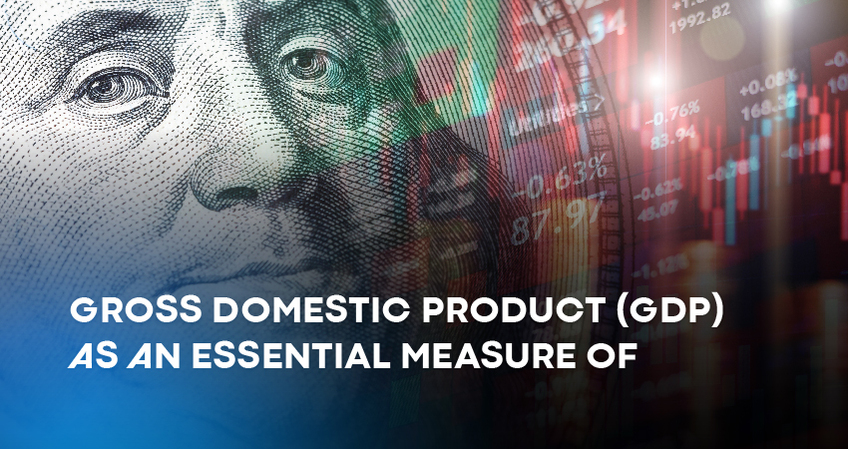Gross Domestic Product (GDP) as An Essential Measure of Economic Health
Gross Domestic Product (GDP) is a widely used economic indicator that measures the total value of all goods and services produced within a country's borders during a specific time period, typically a year. It is a measure of the economic activity and overall size of an economy. GDP serves as a key indicator of the health and growth of a country's economy.
GDP encompasses both consumer spending on goods and services (personal consumption expenditure), investment in businesses and infrastructure (gross private domestic investment), government spending on public goods and services (government consumption expenditure and gross investment), and the net value of exports minus imports (net exports).
How to Calculate GDP
There are different approaches to calculating GDP, including the expenditure approach, income approach, and production approach. These methods provide different perspectives on how GDP is measured but ultimately aim to capture the total economic output of a nation.
1. Expenditure Approach: The expenditure approach calculates GDP by measuring the total spending on goods and services within an economy. It breaks down GDP into different components of expenditure:
· Personal Consumption Expenditure (C): This includes the spending by households on goods and services, such as food, clothing, housing, and healthcare.
· Gross Private Domestic Investment (I): This represents the investment by businesses in machinery, equipment, buildings, and inventories.
· Government Consumption Expenditure and Gross Investment (G): This includes government spending on public goods and services, such as defense, education, healthcare, and infrastructure.
· Net Exports (NX): This accounts for the difference between exports (goods and services sold to other countries) and imports (goods and services purchased from other countries).
GDP is calculated by summing up these components: GDP = C + I + G + NX.
2. Income Approach: The income approach calculates GDP by measuring the total income earned by individuals and businesses within an economy. It considers various types of income:
· Compensation of Employees: This includes wages, salaries, and benefits paid to employees.
· Proprietors' Income: This represents the income earned by self-employed individuals and business owners.
· Rental Income: This includes the income earned from renting or leasing properties.
· Corporate Profits: This refers to the profits earned by corporations after deducting costs, taxes, and dividends.
· Net Interest: This represents the interest earned from loans and investments, minus interest payments.
· Taxes on Production and Imports: This includes taxes levied on goods and services during the production process.
GDP is calculated by summing up all these income components: GDP = Compensation of Employees + Proprietors' Income + Rental Income + Corporate Profits + Net Interest + Taxes on Production and Imports.
3. Production Approach: The production approach calculates GDP by measuring the total value-added at each stage of production within an economy. It focuses on the value created by various industries:
· Value-Added: This represents the increase in value that occurs at each stage of production. It is calculated by subtracting the value of intermediate goods and services (inputs) from the value of final goods and services (outputs) produced by each industry.
· Summing up the value-added across all industries gives the GDP.
This approach ensures that GDP accounts for the value created at each stage of production and avoids double-counting. It provides a comprehensive view of the economic activity within an economy.
What is GDP QoQ?
GDP QoQ stands for Gross Domestic Product (GDP) quarter-over-quarter. It is a measure of the change in GDP from one quarter to the next. This metric is commonly used to track short-term economic growth or contraction within an economy.
When GDP is reported on a quarterly basis, it allows analysts and policymakers to monitor economic trends and fluctuations more frequently. By comparing GDP in one quarter to the previous quarter, one can assess the pace of economic expansion or contraction.
The calculation of GDP QoQ involves comparing the GDP figures for two consecutive quarters. If GDP increases from one quarter to the next, it indicates positive economic growth, and if it decreases, it suggests an economic contraction. The percentage change in GDP from the previous quarter is used to express the QoQ growth rate.

